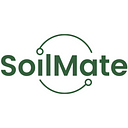The importance of watering
Water is an essential component not only for humans but for plants as well.
Besides the involvement in nutrients transportation and contribution to growth processes, watering affects photosynthesis, respiration, absorption, mineral nutrients utilization, and cell division. So, it is inevitable throughout the whole cycle of crop life.
Both over-watering and under-watering directly affect growth and crop development. In proper quantities, watering can increase crop yields and field productivity.
Even though watering has brought many significant benefits in the form of higher foods, its use has several potential weaknesses.
What could go wrong?
Soil erosion and depletion
Watering pretends that water will be distributed over the soil by drip systems or surface streams. However, uncontrolled irrigation can cause erosion and topsoils leaching with all the nutrients. When the topsoil is massively moved — soils can’t be used to grow crops. For the same reason, streams suffer from clogging, damaging aquatic habitats, polluting water, and increasing the demand for water preparation.
Salinization
Some soils have high levels of salt due to the decomposition of salted natural materials. In irrigated areas, the result of excessive watering causes land salinization. Over time, salt may enter groundwaters. Although a farm that uses irrigation to increase crop yields and quality may not be affected by increased salinity, downstream areas may be affected.
Plant stresses
Moreover, both the excess of water and lack of moisture trigger plant stresses and diseases. So, to avoid most of these issues and minimize their effects, the watering process should be carried out wisely.
Possible solution
Focusing on innovative farming technologies, the smart irrigation system is the second most popular agricultural solution after the data management software. And yes, it is perfectly reasonable because smart farming requires a smart water management solution.
Today, modern irrigation systems, together with a land analytics application, are priceless resolutions for saving water and money and boosting productivity.
Looking across the features of smart irrigation systems
You may wonder, is it not the same technology as automatic irrigation?
In contrast with traditional irrigation, precise irrigation monitoring systems contain controllers that monitor weather conditions, soil health and moisturize, water use by crops. The system creates a custom watering schedule based on a collected data.
Therefore, the irrigation plan adapted to the needs of the particular area.
For instance, irrigation controllers observe environmental conditions and consider specific variables such as changes in temperature, reducing or decreasing rainfall frequency to manage the watering timing and schedule.
What are the benefits?
According to the Global Forecast to 2025, the smart irrigation market is expected to reach $2.1 billion by 2025, at a CAGR of 15.3%. It might be related to the rapid growth of implementing sustainable farming technologies, including smart irrigation and monitoring devices by farmers and growers. This increase makes sense taking into account the following benefits of intelligent irrigation systems.
Fully automatic technology
Since irrigation controllers get the external information from the environment (weather conditions, soil moisture, to be more specific), it reduces human efforts.
The efficient water usage
The recent studies indicate water-saving resources from 30 to 50 percent depending on location and type of irrigation controller in the dry season and up to 80 percent in the rainy seasons.
Cost-effective solution
Intelligence irrigation practices help avoid a lot of unnecessary expenses due to reducing water waste. The system delivers the exact amount of water in cases when needed, thanks to its precise analytics.
Soil moisture sensors
The irrigation controllers rely on moisture sensors installed under the ground in the place of the roots to detect the frequency and the time of watering if needed.
SoilMate’s contribution
Today, in the pursuit of the main goal to feed the growing population, agriculture is spending 70 percent of the world’s freshwater. And usually, 10 to 25 percent (according to different studies), of these waters are in excess. We are aware that the issue needs an innovative solution.
The irrigation should be calculated on precise data, and we intend to help obtain these data directly from crops.
Currently, the architecture of SoilMate allows up to measure soil moisture using the Machine Learning process and Satellite Data.
For now, our Team is working on detection models that will be able to recognize plant stress and diseases.
Consequently, we will be able to deliver the complete field moisture map with areas segmented by moisture level. The user could easily recognize the areas whether it needs extra watering or is already over-watered.
